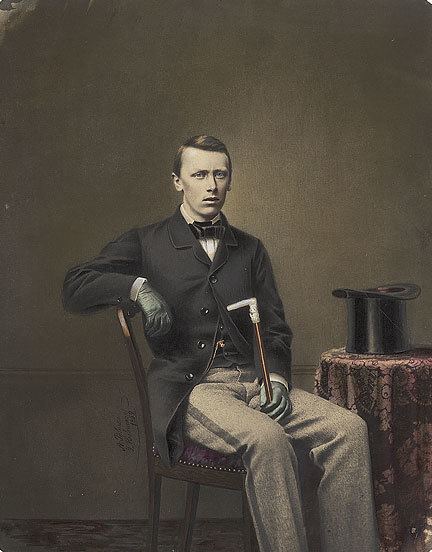Mother Sophie of Wurttemberg | Name William, of | |
 | ||
Southport parades 2018 William prince of orange afterwards King William III.
William, Prince of Orange (Willem Nicolaas Alexander Frederik Karel Hendrik; 4 September 1840 – 11 June 1879), was heir apparent to the Dutch throne as the eldest son of King William III from 17 March 1849 until his death.
Contents
- Southport parades 2018 William prince of orange afterwards King William III
- Early life
- Failed marriages
- Death and aftermath
- References
Early life
Prince William was the eldest son of King William III of the Netherlands and his first wife, Princess Sophie of Württemberg. His nickname was Wiwill. At his birth, he held the third position in the line of succession to the Dutch throne and the seventeenth position in the line of succession to the British throne. A month afterwards on 7 October 1840, his great-grandfather, the reigning King William I of the Netherlands, abdicated the throne due to the disappointment over the recent Treaty of London, which recognized the independence of Belgium (previously provinces of the United Kingdom of the Netherlands), and the intention of marrying a Roman Catholic and Belgian noblewoman, Henrietta d'Oultremont. In 1849, after the death of his grandfather King William II of the Netherlands, he became Prince of Orange as heir apparent. His Victorian upbringing turned out to be a disaster.
Failed marriages
After the failed plans for a marriage between Prince William and Princess Alice of the United Kingdom, the second daughter of Queen Victoria, the prince fell in love with the 19-year-old Countess Mathilde von Limburg-Stirum in 1873. The relationship between the prince and his parents became very problematic, as his parents refused William's wish to accept Mathilde as his bride in 1874. By the standards of the Dutch royal family, a marriage between a member of the royal family and a member of the nobility was considered unequal and therefore unacceptable. Also a rumour circulated that Mathilda was an illegitimate daughter of king William III and so William could be marrying his half-sister. The 33-year-old William wanted to marry, if necessary, without the consent of his parents. However, Mathilda was not yet twenty and so permission was needed from her parents too. Since they denied permission, the prince's attempt to marry Mathilda failed.
Death and aftermath
Heavily disillusioned with his situation in the Netherlands, Prince William then went into exile in Paris, where he threw himself into a life of sex, drinking and gambling. He shared life with Henriette Hauser (also Hausser), his Parisian mistress, a "boulevard theatre" actress. The duc de Gramont-Caderousse, a fellow hedonist, gave him the nickname "Prince Lemon" [le prince Citron in French]; the nickname became popular among the regulars in the recently created boulevards and the Parisian newspapers when they reported about his debauched lifestyle. Prince William died at the age of 38 in his apartment in the Rue Auber, near the Paris Opera from a combination of typhus, liver complaints and total exhaustion. On 26 June 1879 his body was entombed in the royal crypt at the New Church of Delft. On his coffin there was a wreath from French empress Eugénie de Montijo and one from the future King Edward VII, who had been his fellow debauchee.
After his death, his brother Alexander became heir-apparent and Prince of Orange. However he also died before their father, who was now without sons. The States-General adopted cognatic primogeniture in 1888.
